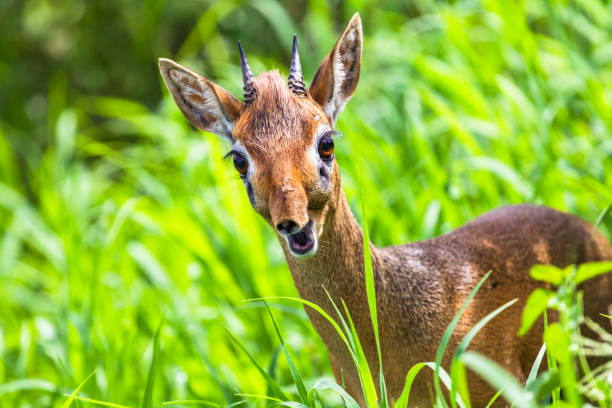The Intriguing World of Dik-Dik Antelopes: Small in Size, Big in Survival
The animal kingdom is brimming with fascinating creatures, often overshadowed by more popular pets or majestic wildlife. One such creature that deserves the spotlight is the Dik-Dik Antelope. This tiny antelope species, native to Eastern and Southern Africa, is an intriguing study in survival, adaptation, and mating rituals.

Unraveling the History of Dik-Dik Antelopes
Dik-Dik Antelopes, named for the alarm call they emit when threatened, are one of the smallest antelope species globally. They’ve roamed the African plains for hundreds of years, thriving in arid regions and savannah landscapes. Dik-Diks have long been a part of African folklore and culture, often symbolizing endurance and resilience due to their survival skills.
Dik-Dik Antelopes Today: Current News and Developments
Recent studies have highlighted the dik-dik’s unique adaptations that help it survive in harsh environments. For instance, these animals have developed elongated snouts that help cool the air they inhale, reducing their need for water. They also have a remarkable ability to stay motionless for long periods, blending into their surroundings to avoid predators.
The Impact of Dik-Dik Antelopes on the Pet Trade
While dik-diks are not typically domesticated, their small size and unique characteristics have drawn interest from the exotic pet trade. However, this practice is generally discouraged due to the dik-dik’s specific habitat needs and the potential for illegal poaching. The price range for a dik-dik, if they were to be sold, could potentially reach up to several thousand dollars, but the ethical and conservation issues outweigh any market interest.
Research Findings: How Dik-Diks Survive and Thrive
Scientific research has unveiled the dik-dik’s fascinating survival strategies. They are selective feeders, choosing to eat leaves, shoots, and fruits that have high water content, reducing their need for direct water sources. Dik-diks are also monogamous creatures, a rare trait among antelope species, which contributes to their survival as a pair can better defend a shared territory.
Making Complex Topics Engaging: Dik-Dik Antelopes
Dik-Dik Antelopes are a testament to nature’s incredible capacity for adaptation and survival. Their lifestyle and characteristics offer a glimpse into the vast diversity of the animal kingdom. While they may not be your typical household pet, their story is an essential addition to the broader conversation about animal conservation and biodiversity.
In conclusion, Dik-Dik Antelopes, despite their small stature, have a significant impact on our understanding of survival and adaptation strategies in the wild. Their story encourages us to appreciate the lesser-known creatures of the animal kingdom and reminds us of our responsibility to protect and conserve all wildlife.





